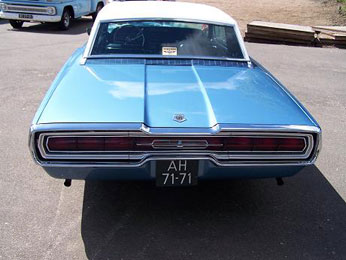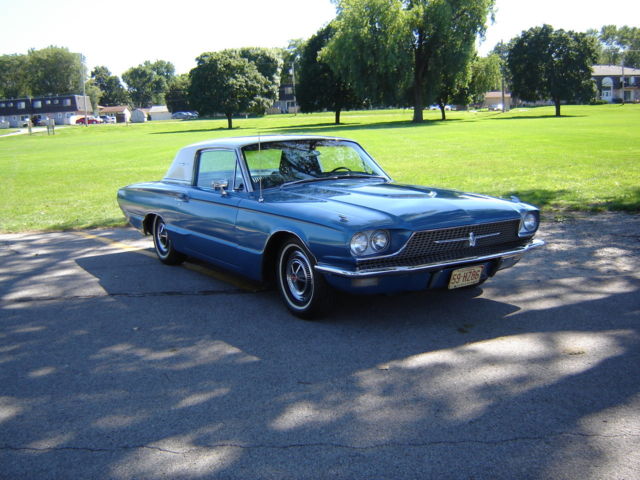
It wasn’t like she had to have one right away, but it was satisfying to hold that car as the ideal and she could see it in the film, any time she wanted - which she did, quite often. She was familiar with and liked a few American cars and convertibles but when she saw Thelma & Louise, she fell for the ’66 T-Bird hard, and for good. Some people find it hard to settle on one car as their favourite but, for Sarah, it was easy. It was the dream machine for Thelma, Louise - and Sarah Kneebone in Auckland, who owns this particular car. The larger expanse of flat panels connected it more strongly with the ’60s-era styling that both Thelma and Louise adored.

It was built on the same basic platform as the third generation but the lines were drawn out and the sculpting more refined, making it look lighter and more elegant, although it was actually considerably heavier.

The fourth generation, the Flair Bird, styled by L David Ash and Art Querfeld, was just right. The sleek third-generation Bullet Bird, styled by Bill Boyer, might have been a fit but, like the first generation, the art director probably thought that it was a little too purposeful, especially when compared with the fourth generation. The second-generation Square Bird was a bit too heavy and down in the mouth, even though it won the Motor Trend Car of the Year crown. The first generation, nattily nicknamed the 1955 ‘Early Bird’, also the ‘Baby Bird’, was too much of a sports car for the dreamlike quality needed. It is no accident that the producers of the film Thelma & Louise settled on the ’66 T-Bird as both the symbolic and actual vehicle for the pair’s ultimate romantic escape into (spoiler alert) oblivion. The car that we see here is the fourth generation of the T-Bird that so perfectly crystalises all the elements of the American road trip. They needed a lazy V8, silky suspension, and a decent expanse of metal around the cockpit so that the occupants didn’t feel too insignificant in the vastness of the Midwestern deserts. The long straight highways in both the mind’s eye and reality didn’t need European sports car handling. Looking back, it’s obvious that Ford was right to move away from the original T-Bird concept of an American sports car to add two more seats and luxury touches, like an electric folding hood, electric windows, door locks, seats, mirrors, and multiple ashtrays. That soaring eagle imagery is surely another reason that the Thunderbird resonates so deeply with both American culture and the landscape.ĭespite the legacy of freeway congestion and smog that was dawning in the ’60s, the dream of endless freedom of the highway still burned strong - and Ford created a car that remains today the best way to live that dream - in the expansive comfort of a convertible Thunderbird. While for many people the name will conjure up images of the cars first, they were actually named after an ancient North American mythical creature that created both thunder with a clap of its wings, and indeed, most of the physical world.

The name has a music that is just so evocative of all that is good and pure about the golden era of the American automobile. The convertible is a perfect expression of one version of the American dream and, for a lucky few, dreams do come true.īy Ian Parkes, photography by High Art Photography THE AMERICAN DREAM


 0 kommentar(er)
0 kommentar(er)
